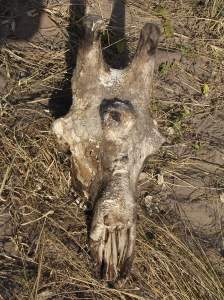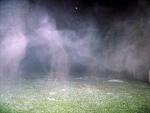
This is a big, big question, and one that is receiving more and more study and attention as time goes by. Learning more about how our planetary co-habitants perceive and understand their environment offers us humans invaluable information for moving forward both scientifically and sociologically.
I am certainly no scientist — not even close — but I find this question a fascinating one so am interested not only in the results of ongoing studies, but also in anything my animal communication clients can share with me on the subject.
We human animals have virtually tuned out any modes of perceiving except through the five senses we depend on most: seeing, hearing, tasting, touching, and smelling. Not so with other species. While most of them share the “big five,” many also have other means of receiving information. Or their use of their five senses is keener or differently honed.
For instance, it is a widely known fact that both dogs and cats have a  sense of smell that is phenomenally greater than a human’s, and in fact they often use this sense first in determining the nature or identification of an object or person. This heightened sense of smell is often reflected in my animal communication sessions. Just recently, Joseph, an alpha male cat in a household of three plus two dogs, told me he was not allowing the petsitter to see him while he was in her care because he didn’t like her smell. We can’t change that person’s smell, but explaining to him the importance of her laying eyes on him so she’d know he was all right did help solve this problem.
sense of smell that is phenomenally greater than a human’s, and in fact they often use this sense first in determining the nature or identification of an object or person. This heightened sense of smell is often reflected in my animal communication sessions. Just recently, Joseph, an alpha male cat in a household of three plus two dogs, told me he was not allowing the petsitter to see him while he was in her care because he didn’t like her smell. We can’t change that person’s smell, but explaining to him the importance of her laying eyes on him so she’d know he was all right did help solve this problem.
Similarly, my Mustang mare, Bella, has always relied on her sense of smell to gather information — about everything. She always sniffs people’s hair before deciding what she thinks of them, and this was, in fact, the very first thing she did with me when I traveled to Colorado several years ago to pick her up. One thing she is looking for, she tells me, is any hint of fear or anything to be fearful of, as her wild-animal instincts still rule her actions.
Many times in my practice animals have shown me what they “see” when something is amiss that their person can’t figure out. What they show me usually looks like vibrational waves or cloudy fog and represents everything from ghosts, to vortexes, to contaminated auric fields around humans. They may look something like this picture and generally do not have any color.
something is amiss that their person can’t figure out. What they show me usually looks like vibrational waves or cloudy fog and represents everything from ghosts, to vortexes, to contaminated auric fields around humans. They may look something like this picture and generally do not have any color.
What about other ways of perceiving? We know whales and dolphins communicate through sonar. And a current study is underway about the meaning of the vibrational messages elephants may be sending when they stamp the earth with their feet.
I took the picture of the giraffe skull a few years ago in Africa and was utterly fascinated by the big knob on its forehead. When I asked our guide what it was for, he was clearly at a loss and told me no one knew . I haven’t found the answer to that yet (if anyone does or knows, please get in touch), but to me it appears obvious — another sonar device, for exactly what purpose I can only imagine, the giraffe’s head being located so high up in the air. Maybe communicating with UFO’s?
If one of your animals is acting strangely, or you notice behavioral changes, please keep in mind that there are possible and probable answers that exist that you and I would never be aware of. Give your friend the benefit of the doubt and ask him to try to tell or show you what is going on. And if you still feel at a loss, consider asking for help from someone who does animal communication. You may be amazed to learn what your animal friend is perceiving, and how.
***************************************************************
IF YOU ARE INTERESTED IN THIS TOPIC, YOU MIGHT ENJOY THIS POST TOO:
Recent Comments